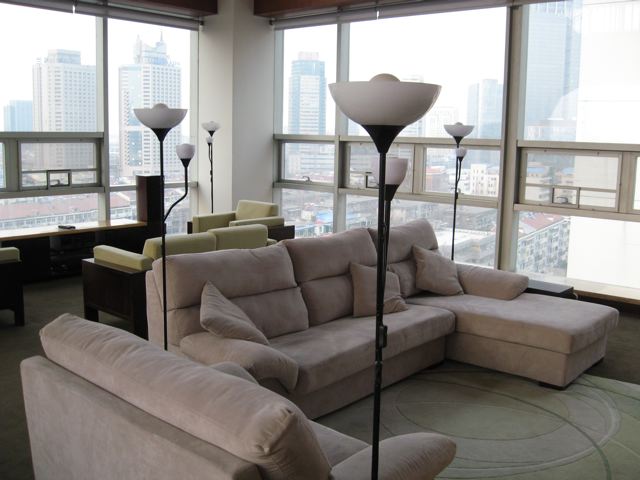Founded in 1986, the Center occupies space at the northwest corner of the main Nanjing University campus, one side facing out onto Shanghai Road, the other facing into the campus and adjacent to the new Business School. In 2006 the Center completed a significant addition which provided new administrative and teaching spaces, a new two-story library, lounges for both students and faculty, and apartments for some Center faculty.

The new building opens into a tall, glassed atrium through which one looks out on a small quad, across which stands the first building, where the student cafeteria, mail room and other facilities are located.
Administrative offices and a conference center utilize most of this first-floor space, but a broad open stairwell rises to the Center's library, an uncensored and vital resource for students and faculty.
With a current enrollment of 90 students, about a third of whom are enrolled in the two-year MA program (the rest as one-year certificate students), the Center's classes are rarely very large, and the teaching facilities correspond to these demographics. Because many faculty use Powerpoint in their courses, classrooms are equipped with computer projectors. With instruction in both Chinese and English, depending upon the course and the instructor, access to powerpoint slides can be a very valuable tool to students listening in a language that is not native to them.
The new building also features some beautiful lounge facilities. Perhaps it is no surprise that the faculty lounge on the eleventh floor is the more winning space. Featuring a beautiful outdoor deck overlooking Nanjing, the lounge also sports an intimate, glass-walled interior where, I can imagine, one could enjoy sitting down with a good book. The deck is a superb space for receptions and other social events, looking out on the fast-rising outline of the city.
The student lounge—located on the fifth floor, I believe—is less luxurious, but still a quite comfortable space where students can recover. Master's candidates also have their own study carrels in another part of the building, so there are multiple places to prepare for and absorb classes.
Of course, in our brief tour we only got a glimpse into life at the Center. But we now have a better appreciation for Andrew's experience, and when we are once again far away, these memories will help us feel closer to him, despite the intervening distance.










No comments:
Post a Comment